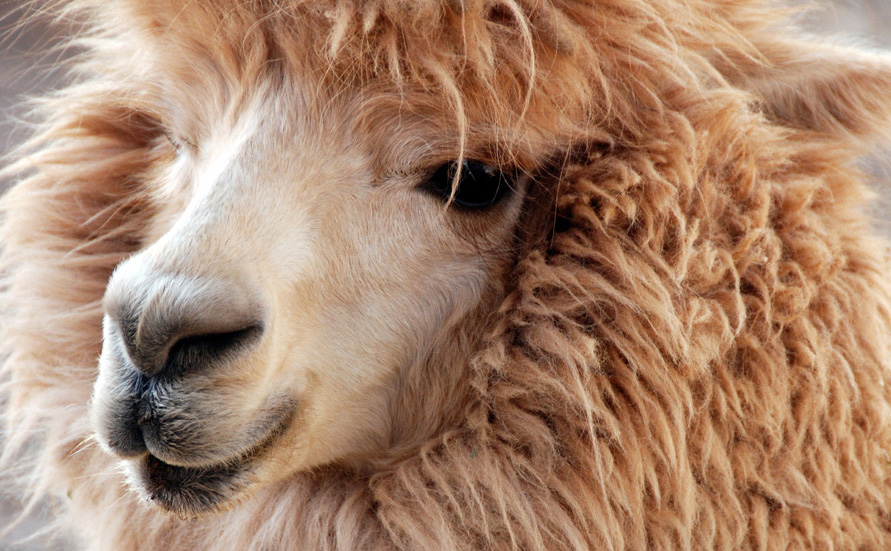Alpaca is getting a lot more attention these days, now that people are starting to notice how it tends to outperform other fibers like wool and synthetics. And why shouldn’t it? Alpaca fleece has been around for millennia — even the ancient Incan kings recognized the alpaca’s unique qualities and reserved the “fiber of the gods” for use by only the wealthy and influential.
But less is known about the proper care and cleaning of alpaca garments. Although alpaca clothing can last for years, too many people ruin their alpaca garments — or shy away from buying them in the first place — simply because they don’t know how to clean and care for them. Fortunately, you don’t have to be one of them. Read on to learn all about alpaca and keep your garments silky and soft for years to come!
Alpaca is different
Alpaca is a breed apart when it comes to natural fibers. Stronger, softer, lighter, and warmer than either merino wool or cashmere, it’s a natural choice for winter clothing and accessories. It’s also resistant to pilling and won’t shrink if proper care is given, making it possible to keep your alpaca clothing for years, even decades!
Alpaca fleece is famous for its luxurious softness and doesn’t scratch or “prickle” the skin like wool products. It’s also hypoallergenic since it doesn’t contain lanolin, an oil generated by sheep that can cause sensitivity in people with dermatological disorders.
As if silkiness and versatility weren’t enough, alpaca makes highly wear-resistant garments: its strength reduces stretching and distortion, and grease and oil don’t spot alpaca as easily as they do other fibers. Due to alpaca’s water-resistant properties, you can simply blot away any spills. And the nature of the fiber reduces static electricity, which attracts dust and soil.
The alpaca itself is a wonderfully gentle, intelligent, and curious animal — most of the time. While they make great pets, you must never cross an alpaca unless you want to receive a face full of half-digested stomach contents and saliva that an angry alpaca hurls at you while “spitting!”
Alpaca is eco-friendly
Alpacas are considered some of the “greenest” animals around. Their adaptations for living in harsh environments like the Andes give them a light eco-footprint: soft pads in place of hooves leave terrain undamaged, and their efficient eating habits result in greatly reduced water and acreage needs relative to other grazing animals.
Alpaca is also sustainable because an alpaca can produce fleece throughout its life without being harmed. When late spring arrives in the Andes (late fall here in the Northern Hemisphere) and the weather warms up, alpaca ranchers shear their animals for their annual “clip.” While alpacas don’t usually enjoy the shearing process itself, they are noticeably more comfortable after their annual “haircut.”
Because alpaca is naturally free of lanolin and other oils found in sheep’s wool, no harsh chemicals are needed to process alpaca fiber, making alpaca ranching 100% natural and safe for the environment.
Fleece lovers looking to reduce their environmental impact look to alpaca because with proper care, it’s virtually indestructible and can be worn for years, reducing the demand for new products. Alpaca garments dating back over 2000 years in Peru are still in good condition — just think of how many trends and fashion crazes that new alpaca sweater will see you through!
How to clean your alpaca clothing
- Fill a clean sink or tub with cold water and a small amount of mild liquid detergent like baby shampoo or a fine fibers formula. (Using hot water, or even two different temperatures of water, will “shock” the fibers, making them mat together and start turning into felt.) Do not use chlorine bleach or even gentle Woolite, as these harsh cleaners will cause damage.
- Soak the garment for 3 to 5 minutes, gently squeezing the suds through the garment. Avoid twisting, wringing, scrubbing, or otherwise agitating it, as this will cause felting. Dyed garments will have some chance of bleed, but since alpaca fiber takes dyeing better than most other fibers, this shouldn’t be a problem after the first wash.
- Rinse the garment twice in clean, cold water and gently squeeze out the excess. Be gentle handling it to avoid wrinkles and distortion.
- Lay the garment between two towels, roll up the towels and set it aside for a few minutes.
- Place the garment on a dry towel or sweater rack and reshape (do not hang to dry). Let it dry away from sunlight and direct heat.
- If the garment is wrinkled after drying, you can steam it lightly with an iron, or simply hang it up in the bathroom, run the shower, and let the steam ease away the creases.
If you don’t have the time to hand-wash your alpaca garments, you can always take them to a professional dry-cleaner. Bring along any labels or care tags that came with the garment, and be sure to point out any spots and stains so they can use the best method to remove them.
How to store alpaca clothing
Alpaca clothing can last for decades, but its greatest enemies are moths and other pests that cause damage during storage. (Although certain dogs have been known to love the scent of alpaca!) If you need to put your alpaca away during warmer months, give it a good clean first following the instructions above — pests are drawn to dirt and body oils on fibers.
You can keep pests away from any garment by storing it in a chest of inspect-repelling Spanish cedar, or by placing cedar chips in the storage area. To keep away moths, use lavender bundles (although chemical moth balls will do as well).
A shirt box, clean pillow case, clean paper bag, or cardboard box will keep the air circulating around the garment. Never use plastic or dry cleaning bags for your alpaca, as this will cause moisture to build up and the fibers will felt. And like any other knit garment, alpaca clothing should be folded rather than hung to prevent stretching and distortion.
Love your alpaca and it will love you back
Wearing alpaca during the colder months is an easy way to look distinctive and sophisticated while feeling comfortable and cozy. Love and care for your alpaca clothing and you’ll feel the warmth and coziness of the Andes’ most interesting and lovable animals. Neglect it and . . . well, we did warn you what might happen if you cross an alpaca!
Do you have an alpaca garment that you’ve kept for years? Tell us about it in the comments!








Thanks for all the interesting and useful information! I have an additional care question, though. I find that my alpaca cape sheds — usually onto whatever I’m wearing underneath it. Can you recommend a way to prevent shedding?
Hi Kathleen, great question! You’re definitely right that alpaca garments can shed, depending on how they’re spun — much like an angora sweater. What you can do to minimize shedding is this: the night before you want to wear the cape, fold it up neatly and put it in a big Ziploc bag (or another sealed bag, depending on how big it is), then stick it in the freezer. The fibers should behave a little better the next day. Also, when you’re planning the rest of your outfit, try to stick to polyester or other “smoother” fabrics that won’t attract the alpaca so much. (Wool, for example, is notorious for attracting alpaca!) Give the cape a good brush with a lint roller and carry the lint roller with you that day, and you should be able to keep shedding under control. — Allison
Thanks, I just clean up my 15 year old hat (:
Thanks for your valuable information. I own a alpaca’s hair poncho brought from perú years ago and i couldn’t find a place where to take it to be laundered. No dry cleaners aroun where i live have any information about alpacas’s fiber. I would try your method and we’ll see. Thanks again
Hello I bought a beautiful alpaca jacket when I visited Peru last year. However, it is pilling very badly. I have used one of those little brushes that are supposed to get rid of pilling but not working. Any ideas please.
Regards, Elizabeth
I purchased a pair of baby alpaca gloves in Peru that are a bit too large. I was told that I could shrink the gloves by placing them in hot water for about 5 min. However, reading online instructions leave me concerned that the gloves will ‘felt’. Your advise as to how and if I can shrink the gloves would be gratefully appreciated.
Do you know if it is safe to soak an Alpaca coat in vinegar? My daughters cat peed on the coat and that’s the only thing I know to use to remove the smell.
have an colorful 100% baby alpaca wool sweater that was purchased in Aspen Colorado 20 years ago. your post helped me so much. I just had it folded on a shelf in the closet as I now live in florida it is not worn at all…..now I will put in a pillow case and use some cedar chips. thanks
Whist I was in hostpital
Someone in my family washed my alpaca cardigan
Came out shrunk and full of dog hairs
You can imagine how upset I was I paid £139.00
And worn it above a few times
I washed it in hair conditioner rolled in between two towel
Pulled into shape the weave was still tight so used a
Debobbler worked a bit but caught the stitch so had to mend small hole
Just washed it again back to right size but can’t get rid of the dog hairs
Any tips would be appreciated
Absolutely love alpaca garments
Does anyone know how to restore alpaccas socks that have been in a hot wash and shrunk?
Soaking the garment for 3 to 5 minutes is absolutely enough. My advice is not to forget it soaking for the whole day. I did this mistake. It ruins it! Alpaca products needs gentle cleaning. Best regards!
Can you please tell me the best way to fix a snag in my Alpaca poncho? I snagged it with the hook of my bra. 🙁
I have an alpaca sweater and poncho I bought in Lima in 1985! I used them both this winter. Nothing warmer or cozier! Thank you for the information on washing and caring for them.
[…] https://www.novica.com/blog/how-to-clean-and-care-for-alpaca-products/ […]